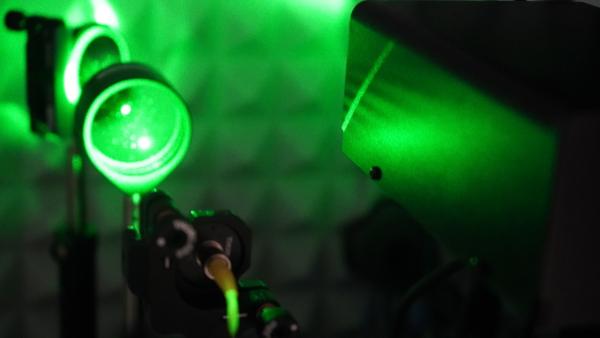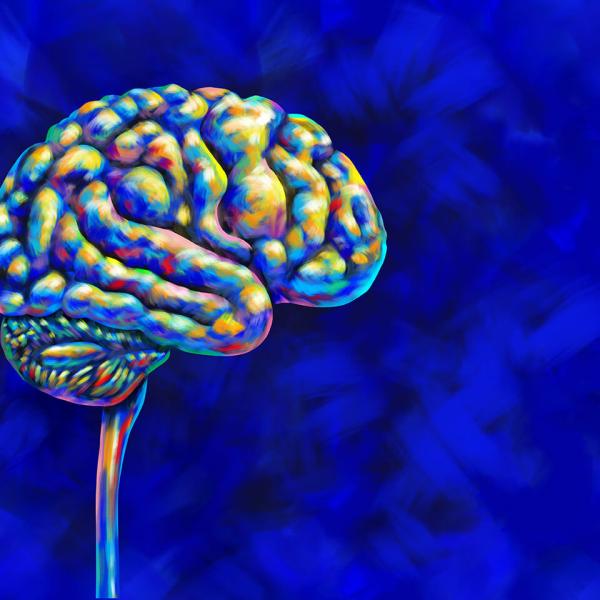Creating a molecular pegboard

Using “DNA origami” has enabled Hughes to build what he calls dNAM: digital nucleic acid memory.
The technology involves two parts. The first is a three-dimensional “pegboard” created from a customized sequence of double-stranded DNA. The second is an array of short single-stranded DNA “pegs,” each one tailor-made to fit inside a different hole in the pegboard. There are two versions of each peg: one with a docking site for light-emitting molecules called fluorophores, and one without.
To encode data, Hughes and his team select different combinations of pegs and then flood the genetic pegboard with fluorophores. The fluorophores attach to the pegs with docking sites, creating a pattern of lights that can be read out using a super-resolution optical microscope.
“It’s a pretty amazing technique,” says Hughes. “It’s really computer science, materials science, physics, chemistry, biology and engineering coming together.”
Harnessing the power of DNA data storage
The approach offers significant benefits. DNA is stable and robust. It can retain information for thousands to millions of years. And according to back-of-the-envelope calculations, it uses 100 million times less energy than current storage methods. (Data centres currently account for one to two percent of the world’s electricity consumption, and the use of energy-hungry AI is expected to push that figure to three to four percent by the end of the decade.)
But dNAM’s biggest advantage is density, fitting much more information into a much smaller space than conventional storage methods. Hughes and his colleagues predict it would be possible to store every social media post, email, photo, song, movie and book ever created into something the size of a jewellery box.
That’s even with redundancy built in to guard against data loss. “Even if we lose a couple of pieces here and there, we are able to recover the message completely,” says research associate Luca Piantanida.
Having an instrument that helps people realize that they can compete with the world at UBC Okanagan is fabulous.
– Will Hughes, University of British Columbia Okanagan
Hughes and Piantanida first developed the technology at Boise State University. When Hughes was invited to head up the school of engineering at UBC Okanagan in 2022, he and Piantanida set up a new research lab from scratch to advance their dNAM technology. One of the centrepieces is a CFI-funded atomic force microscope (AFM).
Like a needle on a record player, the AFM can scan the bumps and dips of the dNAM from above as it moves across its surface. At the same time, the optical microscope scans from below to detect fluorophores. The two-in-one system allows the researchers to correlate the physical structure of the dNAM with the pattern of light-emitting fluorophores, reducing errors.
It also provides a powerful tool for refining their dNAM prototype. Currently, Hughes, Piantanida and their team of four students are improving the DNA sequences to encode information more efficiently and effectively, and they’re developing multi-layered DNA pegboards to boost storage capacity even further.
Putting Canada at the forefront of a data storage revolution

Developing such a radically different approach to data storage is a high-risk undertaking. But dNAM has the potential to transform the industry, starting with archival storage.
To achieve that at a young, up-and-coming campus like UBC Okanagan is no small thing, according to Hughes. “Performing world-class research in a world-class environment is an expectation,” he says. “Doing so in an emerging research environment is equal parts opportunity and responsibility.”
The CFI funding has enabled us to approach the second phase of this technology. Thanks to it we were able to bring our research to Canada and further it here.
– Luca Piantanida, University of British Columbia Okanagan
The research project featured in this story also benefits from funding from the Canada Research Chairs Program.







